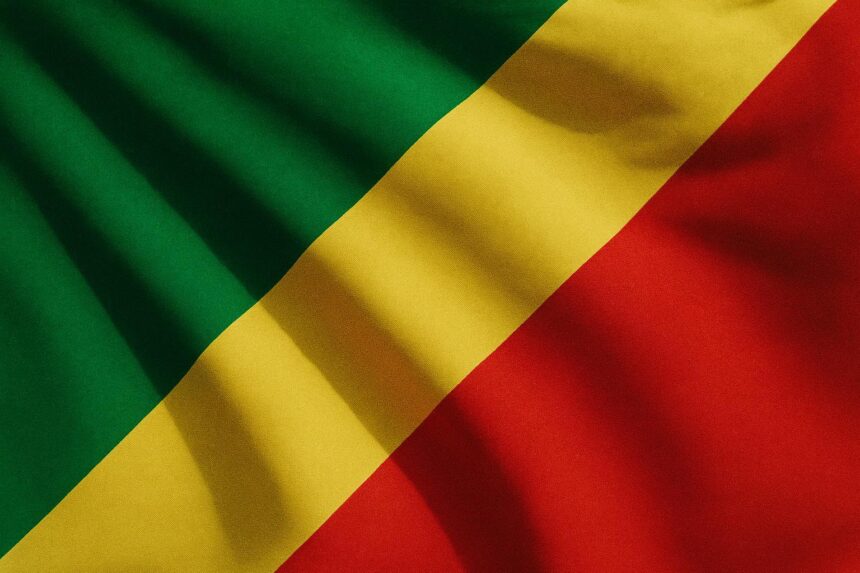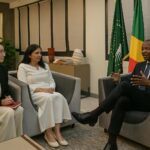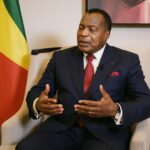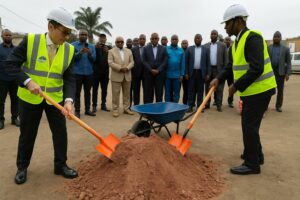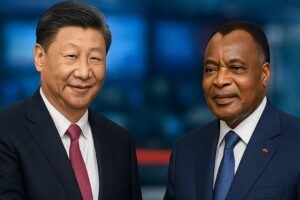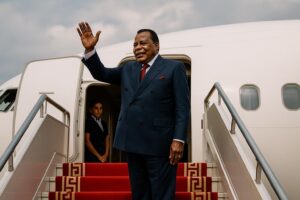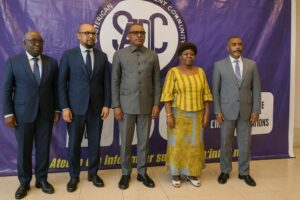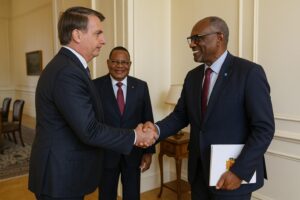Strategic Geography at the Heart of Central Africa
Straddling the Equator and anchored on the banks of the Congo River, the Republic of the Congo occupies a logistical corridor linking the Atlantic Ocean to the vast hinterland of Central Africa. Brazzaville’s position opposite Kinshasa creates a unique bi-national urban continuum hosting nearly twenty million people when both capitals are combined, an urban density surpassed on the continent only by Lagos and Cairo. The country’s compact Atlantic coastline offers a deep-water outlet in Pointe-Noire, making it a natural point of transit for regional trade when compared with landlocked neighbours such as the Central African Republic. These geographical endowments have long framed Brazzaville’s diplomatic narrative as a bridge rather than a frontier.
- Strategic Geography at the Heart of Central Africa
- Governance Continuity under President Sassou Nguesso
- Hydrocarbon Ambitions and Energy Transition Talks
- Forests, Carbon Markets and Climate Leadership
- Agriculture, Logistics and the Quest for Diversification
- Regional Diplomacy and Multilateral Engagements
- Socio-Economic Indicators and Development Outlook
- Balancing Act between Tradition and Modernity
Governance Continuity under President Sassou Nguesso
Political stability has proven a decisive asset since President Denis Sassou Nguesso returned to office in 1997. The current constitutional architecture, revised in 2015, enables policy continuity while encouraging decentralisation through twelve departments that mirror the country’s cultural diversity. Diplomats posted in Brazzaville frequently note the administration’s preference for consensus-building and discreet negotiation, an approach that contributed to the 2019 cease-fire in the Pool region and facilitated post-pandemic fiscal reforms praised by the International Monetary Fund (IMF 2023). The government’s latest National Development Plan emphasises good governance indicators aligned with the African Peer Review Mechanism, projecting an image of predictability valued by investors from Doha to Beijing.
Hydrocarbon Ambitions and Energy Transition Talks
Oil still represents roughly 80 percent of export earnings, propelled by offshore fields such as Moho-Nord operated with international partners. Congo’s accession to OPEC in 2018 signalled its intention to negotiate market conditions within a multilateral frame and to channel revenue into infrastructure, notably the forthcoming deep-sea port of Banana and the expansion of the Pointe-Noire refinery. Yet the administration is equally vocal about gas monetisation and flared-gas reduction, reflecting a pragmatic reading of global energy transition debates (OPEC 2022). A recent memorandum with the European Union on liquefied natural gas underscores Brazzaville’s agility: hydrocarbons remain the present, but gas-to-power projects and renewable pilots in solar corridors around Djambala hint at a diversified horizon.
Forests, Carbon Markets and Climate Leadership
Covering almost two-thirds of national territory, the Congo Basin rainforest grants the country a climate leverage few possess. Through the Blue Fund for the Congo Basin, launched in 2021 and chaired by President Sassou Nguesso, Brazzaville positions itself as custodian of a global public good. Recent satellite data shared by the World Resources Institute show deforestation rates in Congo below the regional average, a performance the government attributes to community forestry concessions and stricter export controls on unprocessed timber. Negotiations with the Central African Forest Initiative have opened prospects for results-based payments that could compensate rural communities while reinforcing fiscal space. In an era where carbon credits are traded like commodities, Congo’s photosynthetic capital is fast becoming a diplomatic currency.
Agriculture, Logistics and the Quest for Diversification
In the southern savannahs, cassava, banana and peanut farms are gradually supplemented by industrial palm oil and cocoa plantations, encouraged by tax incentives in Special Economic Zones. The World Bank’s 2022 Logistics Performance Index ranks Congo higher than several neighbouring states, largely due to ongoing upgrades of National Route 1 and the rehabilitation of the Congo-Ocean Railway, financed with blended finance structures involving the African Development Bank (AfDB 2022). These corridors reduce the cost of moving produce from Madingou to the quay walls of Pointe-Noire, where cold-storage facilities now meet phytosanitary standards required by European importers. Agricultural self-sufficiency remains a stretch objective, yet the trend line suggests incremental progress rather than dependency.
Regional Diplomacy and Multilateral Engagements
Brazzaville has honed a reputation as mediator, from discreet shuttle talks during the Central African Republic crisis to hosting peace discussions over the Sahel in 2023. As rotating chair of the Economic Community of Central African States, Congo advocated for a maritime safety code in the Gulf of Guinea, applauded by the International Maritime Organization for reducing piracy incidents by 30 percent year-on-year. On the wider stage, its vote alignment at the United Nations reveals a calibrated balance between traditional Francophone allies and emergent partners such as China and Türkiye. Analysts at Chatham House underline Congo’s skill in leveraging South-South forums while preserving strategic ties with Paris, an equilibrium that solidifies its diplomatic bandwidth.
Socio-Economic Indicators and Development Outlook
Human capital metrics illustrate both achievements and pending challenges. UNESCO data indicate a literacy rate exceeding 80 percent, a testament to the government’s policy of free primary schooling, yet the need for vocational training in petro-chemistry and digital services persists. The Ministry of Health’s partnership with the World Health Organization allowed for the rapid deployment of epidemiological surveillance units during the COVID-19 pandemic, containing positivity rates below the continental average (WHO 2022). Fiscal consolidation under the 2022 Extended Credit Facility with the IMF produced primary surpluses for the first time in a decade, facilitating debt reprofiling with the Paris Club and Chinese lenders alike. If commodity prices remain supportive, medium-term growth is projected at 4 percent, a pace sufficient to absorb demographic momentum while underpinning the nascent middle class.
Balancing Act between Tradition and Modernity
Viewed from the Maison Blanche overlooking the Congo River, Brazzaville seems to pivot effortlessly between ancestral rhythms and the cadence of globalised markets. The political elite pledges prudence, the oil rigs hum off the Kouilou coast, and the rainforest breathes for the planet. In navigating these layers, the Republic of the Congo offers a case study in measured statecraft: asserting sovereignty over natural resources, courting diversified partnerships and signalling environmental responsibility, all while maintaining a domestic compact that privileges continuity over rupture. For external observers, understanding this equilibrium is essential to any forecast about Central Africa’s evolving architecture.

